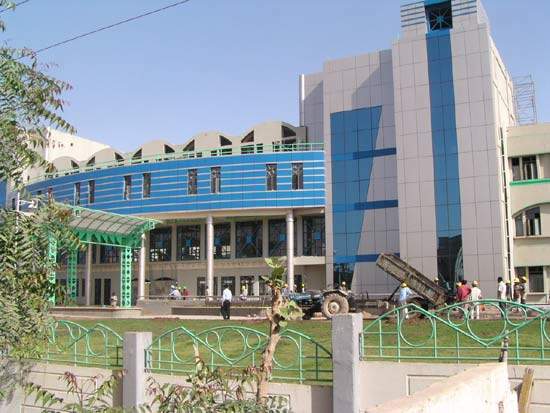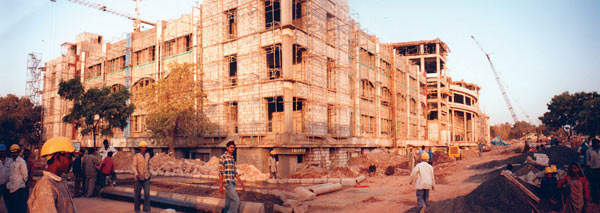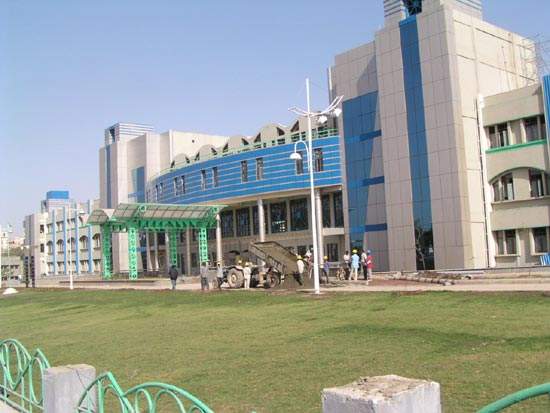Gujarat province in Northern India was the home of Mahatma Ghandi. It is also the site of earthquakes, one of which devastated the province in January 2001 and caused tens of thousands of casualties.
During the disaster the local hospital in Bhuji (420km west of state capital Gandhinagar) collapsed claiming approx. 176 lives. The New Zealand Government, as part of its international aid programme, decided that rebuilding the ruined facility would be a suitable project for New Zealand earthquake engineering assistance.
EARTHQUAKE-RESISTANT HOSPITAL
New Zealand, known as the “shaky isles”, has considerable expertise in earthquake-proofing buildings as it is often effected by tremors.
It was decided that the new 300-bed hospital be fitted with a New Zealand-developed lead-rubber base-isolation system.
With this system the bearings are part of the building’s foundations, allowing the structure to remain virtually stationary during an earthquake. “Base-isolation is well-suited to construction styles in India,” commented an engineer from Beca NZ which was charged with completing the project. “The system is maintenance-free and does not incorporate electronics. It’s just rubber and lead.”
Structural engineers Dunning Thornton Consultants from Wellington were part of the New Zealand design team and supervised installation of the first bearings on site in late 2001. Eventually, 280 lead-rubber bearings were installed.
Base-isolation protects a number of buildings in New Zealand, including the national museum (Te Papa), the Parliament Buildings and Wellington Hospital’s new emergency department. It’s also used in numerous buildings and bridges in earthquake-prone countries around the world.
The new 30,000m² hospital is the first building in India to be fitted with the technology. It is reputed to be able to stand a force 10 tremor on the Richter scale. There are plans to extend the facility into a teaching hospital and boost its capacity to 500 beds.
HOSPITAL FACILITIES
The main hospital building has a CT scan room, three intensive care units and eight operation theatres apart from other basic facilities.
Aside from the main hospital building, there is a block for the chief district medical officer, two nursing schools – one general and another for female health workers – a commercial health centre and staff quarters.
The New Zealand Government contributed $150,000 to the project with the rest coming from the Government of India. The total cost was Rs1 billion.
HOSPITAL MANAGEMENT
The hospital will be managed by the state health department, which maintained the old GK Hospital. A team of officials, headed by health secretary SK Nanda, has been appointed to monitor and supervise the work of the new hospital.
The proposed medical college to run with the hospital will be as per the conditions laid down by the Medical Council of India. It will be the 11th medical college in the state and the first one to be set up in Kutch region.
Since completion in mid 2003, the new building has stirred controversy. The people of Bhuj are wary that the facilities at the hospital may not be as cheap as in the past.
“There was no need to spend so much just on a single hospital when there are people who still do not have brick-and-cement houses of their own and children are studying under prefabricated structures,” commented one local social activist.
Officials in the health department also say after spending so much on the hospital it will simply not be possible for the government to provide free treatment. It is also not clear if the hospital will be run by the state or the central government. Talks are also being held on handing over the management of the hospital to corporate houses.
“If corporate houses take over the management, the facilities will not be free. The objective of a government hospital dies a premature death,” said one official. “The government is in a dilemma on how to run the show. Delay in the inauguration of the hospital is also adding to the rumours.”
Some people’s associations have even threatened to protest.
Said Vakhatsinh Jadeja, a Bhuj-based educationist is quoted as saying: “I have heard that the hospital is likely to be handed over to corporate houses. If this is true, people will not get facilities for free.
“The quake-affected people of Kutch are not at all in a position to spend huge money on healthcare. And why should they pay when facilities were available free at the same hospital?”




